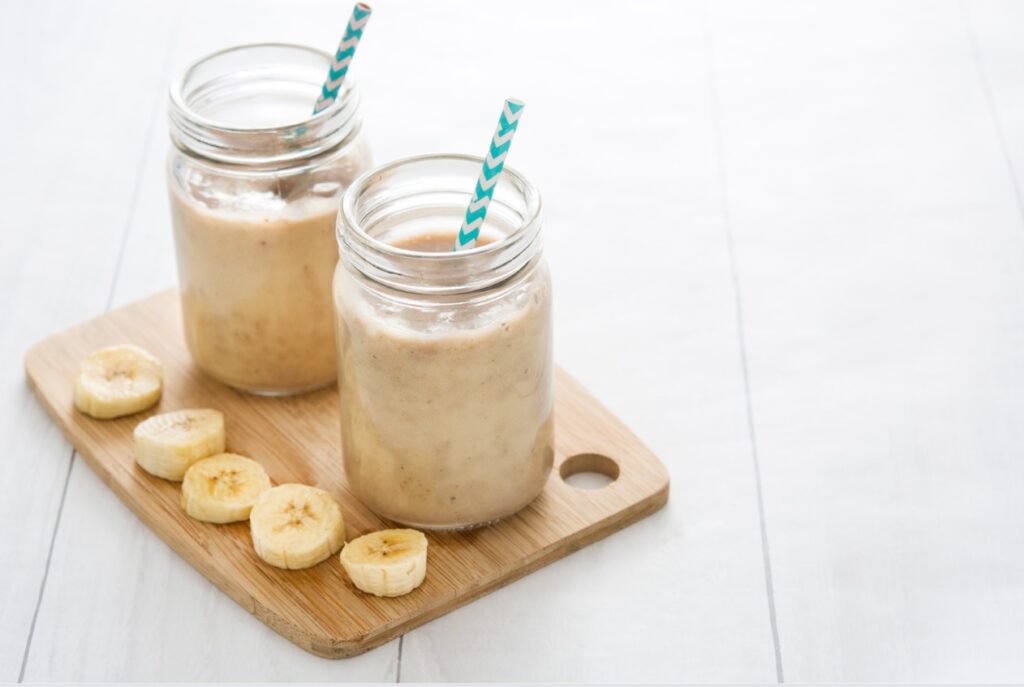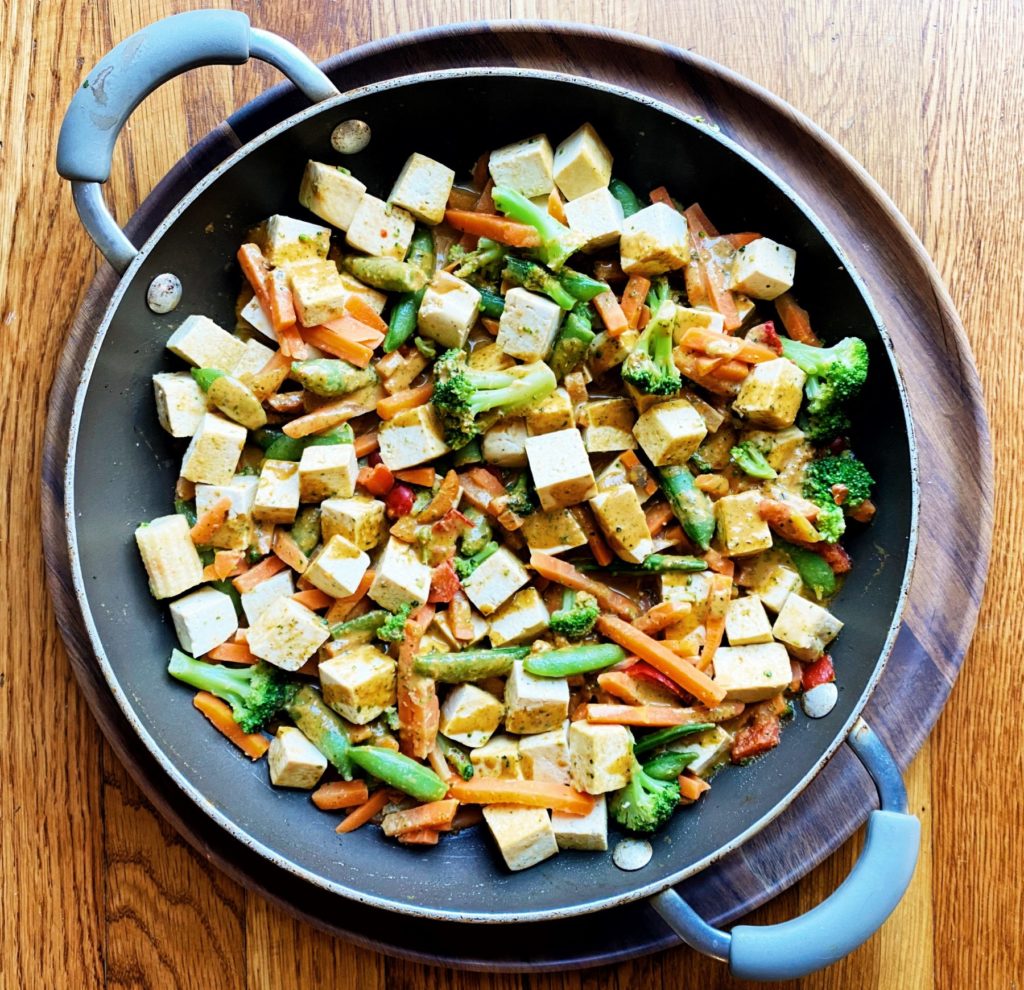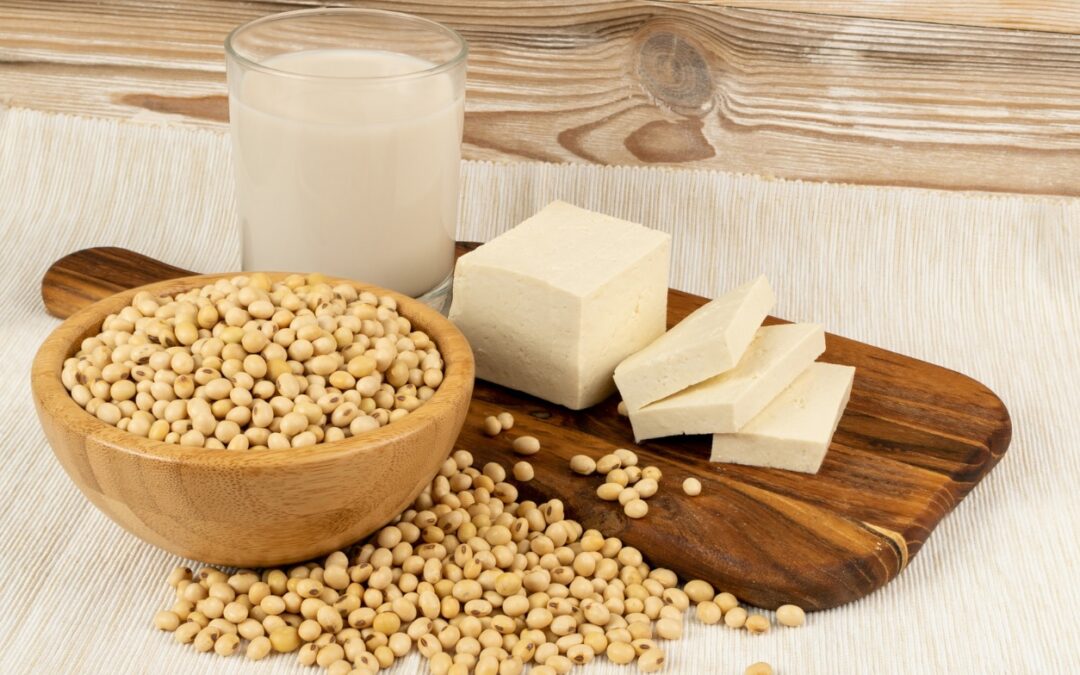Ah, August, the month all parents have been waiting for. While summer offers so many opportunities for family fun and making memories, it is nice to fall back into the routines of the school year that provide structure that many of us thrive on.
As we move back into the rhythms of the school year, planning out weekly menus becomes a task that we often don’t “love” but certainly offers us benefits. Dedicating time on the weekends to think through quick, but nutritious breakfast, lunch and dinner ideas will serve you well all week long. I never regret having that plan when we’re all exhausted on a Wednesday evening at 5 pm.
Soy foods such as soy milk, tofu, and edamame are nutrient-dense foods that offer specific macro and micronutrients to support the individual nutrient needs of every member in our family. This is especially true when it comes to getting high-quality protein. Soy is one of the few known plant-based proteins that contains all the essential amino acids, like those found in meat.
The Health Benefits of Soy
Soy has an attractive resume that includes high-quality protein, fiber, and phytochemicals shown to support many areas of our health. A diet rich in soy foods is associated with a lower risk of heart disease and soy protein has been shown to lower both total and bad cholesterol.
For women, soy isoflavones may help reduce hot flashes in menopause. And soy may help support bone and brain health – which is especially important with aging. Soy has also been shown to be protective against certain cancers, including breast cancer.
What about Processed Soy Products?
As a mama dietitian, I need both flexibility and convenience in the menus I plan. Yes, most of the time we enjoy less processed soy foods like tofu and soy milk. But we also enjoy processed soy products. Soy breakfast links are a protein lifesaver in the morning when we’re trying to get out the door and pan-fried soy burgers can be quickly assembled for dinner before evening sports kick off. Processed soy products offer an outstanding source of quick protein, with 5 grams or less saturated fat. And most, importantly our family enjoys their taste and flavor!

Meal Planning Made Easy with SOY!
Breakfast: Cocoa Banana & Flaxseed Smoothie

Recent research shows that many plant-based milks fall short in protein. Soy milk, however, is one of only plant-based milks that offer complete protein, like that found in cow’s milk. In fact, soy milk is the only plant-based milk alternative recommended in the U.S. Dietary Guidelines.
Soy milk is also a good source of calcium that is as easily absorbed by the body as the calcium in cow’s milk.
Serving Size: 2
Ingredients:
1.5 cups vanilla soy milk
1 frozen banana
1 T. peanut butter
1 T. unsweetened cocoa powder
1 T. ground flaxseed
1 T. maple syrup or 1 date
Directions:
Blend all ingredients and serve.
Lunch Box Protein or Afternoon Snack: Salted Edamame

Packing a protein at lunch can often be challenging, especially for my one kiddo who doesn’t like deli meat or eggs and can’t bring peanuts/nuts to school. Shelled edamame has been an easy way for me to add protein to his lunch. I add frozen edamame to his bento box, and by the time lunch rolls around, it’s perfectly thawed.
In addition to protein, some soy foods like tempeh, edamame and textured soy protein also have fiber, a nutrient most Americans of all ages don’t get enough of. One cup of edamame has 8 grams of fiber – for adults that’s more than 1/4 of the way to meeting your goal of 28 grams/day.
You can purchase edamame in the pods (more fun to eat!) or shelled edamame in the freezer section of the grocery store. To enjoy, simply grab a handful of frozen edamame, place in a microwave safe dish. Sprinkle with water and heat in the microwave for one minute. Stir edamame and microwave for one additional minute.
Dinner: Tofu Stir-Fry with Basil Peanut Butter Sauce

Tofu is a blank slate that welcomes any of your favorite flavors. In this stir-fry recipe, I toss in a basil peanut butter sauce that’s both savory and sweet. Look for “high protein” tofu at your grocery, – it’s a type of tofu that has the water removed & all you must do to prep the tofu is take it out of the package! I use it to make a quick stir fry or sheet pan meal with veggies.
Ingredients
Basil Peanut Sauce
- 1/2 c. light coconut milk
- 1/2 c. peanut butter
- 1 c. fresh basil leaves
- 2–3 garlic cloves
- 1–2 T. red curry paste (depending on your spice level preference)
- 1 T. maple syrup
- 1 T. light soy sauce
- 1/4 c. water or vegetable broth to thin
Tofu Stir-Fry
- 1 T. olive oil or sesame oil
- 20 oz. frozen vegetable stir-fry mix
- 1, 16-oz. high-protein or extra firm tofu, cubed
Directions:
Basil Peanut Sauce
- Using a blender or immersion blender. Combine all ingredients except vegetable broth or water.
- Gradually add water or broth to thin to desired consistency.
Tofu Stir-Fry
- Warm oil over medium-high heat in a large sauté pan. Add cubed tofu.
- Sauté tofu until lightly browned on all sides.
- Add frozen stir-fry vegetables. Place lid on sauté pan for 5 minutes. Stir and cook for another 5 minutes until all vegetables are cooked through.
- Add 1/3 to 1/2 cup Basil Peanut Sauce depending upon how “saucy” you like your stir-fry!
Nutrition
- Serving Size: 1 serving
- Calories: 316
- Sugar: 9.9 g
- Sodium: 415.4 mg
- Fat: 20.1 g
- Saturated Fat: 5.8 g
- Carbohydrates: 21.2 g
- Fiber: 6.3 g
- Protein: 19.1 g
- Cholesterol: 0 mg
Soy Foods & Their Long-Term Health Benefits for Families and the Earth
In addition to the short-term benefits of soy saving me time in both menu planning and in the kitchen, we can feel good about the long-term benefits to the health of our environment.
It’s important for me to eat in a way that allows our future generations to have access to enough high-quality food. For that to happen, we must support sustainable farming practices and include genetic modification as part of the solution.
Planning for meals with the use of plant protein is also beneficial to the environmental health of the planet, too. It’s a win-win to have the ability to enjoy delicious, easy to assemble meals while also caring for Mother Earth.
This post is in collaboration with the Soy Nutrition Institute (SNI) Global, an organization leading the way in soy and health research and education, and U.S. Soy.

